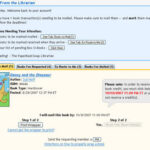It took me five years to write my young adult fantasy but only five minutes to publish on Kindle. Like many unknown authors, I first tried to get a literary agent. But after many rewrites and a total of 180 rejection letters, I decided to bypass the guardians at the gate and publish on Amazon. The fate of my story is now up to the readers.
Books for Kindle are growing in popularity. In fact, Amazon is now reporting selling more Kindle books than traditional paperback or hardcover books. In its first week, my Kindle book was downloaded 300 times (albeit for $0.00). So, if like me you are ready to publish on Kindle, here are the steps to follow.
Publishing on Kindle in a Nutshell
The Kindle publishing experience is composed of nine steps:
1. Formatting your manuscript for Kindle devices.
2. Obtaining a Kindle book cover.
3. Copyrighting your manuscript.
4. Obtaining an ISBN.
5. Writing a catchy book description.
6. Deciding on royalty and pricing.
7. Publishing on Kindle.
8. Deciding if KDP Select is right for you.
9. Promoting your Kindle book.
Formatting Your Manuscript
Publishing on Kindle requires that you format your manuscript for all Kindle devices (Kindle, Kindle Fire, Kindle DX, Kindle for iPhone, Kindle for iPad). Luckily it’s an easy process. Download a free copy of Building Your Book for Kindle (after registering for a free Amazon account). If you opt to download the book to the cloud, you’ll be able to read it on your computer. Follow the step-by-step tutorial. It’s easy and fun.
Tip: If your published kindle book will contain images, I recommend sizing them to resolution: 144 pixels, size: 6×4.5. Be aware that there is no way to remove the white borders from around images displayed on Kindle (black and white).
Obtaining a Kindle Book Cover
The most important aspect of publishing on Amazon Kindle is the question of your book cover. You can obtain a free cover from Amazon (the tutorial will show you how). But books for Kindle must have a beautiful cover to catch the eye of potential buyers.
After extensive research, I decided to hire a professional artist overseas (as US artists were far more expensive). Here’s an example of my Kindle book cover, which you can compare to a free Kindle book cover. As you can see, publishing on Kindle might be free, but if you opt for a free cover your book is likely to be ignored by visitors to Amazon.
Copyrighting Your Manuscript
In the United States, you are already covered under the copyright law, whether you copyright your book before publishing on Kindle or not. However, since the cost of copyrighting your manuscript with the Library of Congress is minimal, I would advise it. Visit the Electronic Copyright Office and follow the step-by-step process. You can pay the $35 fee by credit card.
It took two months for my copyright proof to arrive by mail. But I didn’t have to wait for it before going ahead with publishing on Kindle, since the claim number of my application was, in fact, my copyright number.
Obtaining an ISBN for Your Kindle E-book
When you publish on Kindle you must first be in possession of an ISBN (and also a bar code if you’ll be publishing paperback editions as well). You can order an ISBN (and bar code) for your Kindle books online. You’ll be asked to enter or upload the following information: a copy of the e-book and cover, a description, pricing, rights and your contact information. Obtaining an ISBN costs money (how much depends on what you buy) and is not connected with Amazon.
Writing a Catchy Book Description
After the cover, the description of your Kindle book is the most important factor when it comes to the success of your book on Amazon. Check out other books for Kindle and find inspiration for your own book blurb. Here’s my book description, and another excellent book description in my genre. To find others, simply look for kindle books with high review ratings, in high numbers.
Deciding on Royalty and Pricing for Your Kindle E-book
Before publishing on Kindle I ran searches on Amazon for similar books to mine. Reviewing my competition gave me the opportunity to price my book advantageously. Since many books for Kindle are free or cost $0.99, I couldn’t price my book at $9.99, as it might be in a traditional store.
This said, you can always go back at any time and alter the price of your Kindle book, even after publication.
Regarding royalties from Amazon on your Kindle book sales, there are two options: 70% or 30%, and both are easily explained in the publishing form, where you’ll be asked to make a choice.
Publishing on Kindle
After all your hard work, publishing on Kindle takes just a few minutes. Log on to Amazon’s publishing tool, which consists of two pages. There you’ll be asked to enter the ISBN, book title, whether it is part of a series and the book description. In addition, you’ll need to upload your manuscript (mine had illustrations embedded in it, as instructed in the tutorial), as well as your Kindle book cover. Finally, you’ll be able to choose your preferred royalty and pricing.
Before you click the “Publish” button, you’ll have to decide if to enroll in Amazon KDP Select.
Deciding If KDP Select Is Right for Your Kindle Book
Publishing on Kindle is officially known as KDP (Kindle Direct Publishing). As part of the publishing process I decided to check the box that opted me into the KDP Select program. In this way, I granted Amazon Kindle 90 days exclusivity on selling e-versions of my book.
In return, Amazon included a copy of my book in their library, and I would get a portion of the proceeds associated with the library’s activity. In addition, Amazon offered me a free 5 day promotion of my book on their sites. I decided on the dates, and my book was offered to readers for free, resulting in a little over 300 downloads.
Promoting Your Kindle Book
After publishing on Kindle I set to promoting my book in the following ways:
1. I visited Amazon’s Author Central, where I registered for free, creating an author page on Amazon. There I provided an enticing bio and listed my book website.
2. Using the illustrations in my book, I put together an enchanting Kindle book website. I used Expression Web (here’s my tutorial for building your own website). You can also create your own blog with Word Press (which is free and relatively easy).
3. To promote my Kindle book with social medias, I created a book page on Facebook and opened an account on Twitter. And to create social media buttons on my Kindle book website I used the following links: Facebook, Twitter. In addition, I opened a Hotmail account dedicated to my Kindle e-book, using my pen name, Dew Pellucid.
4. To make money on book sales generated by my Kindle book website, I joined Amazon’s affiliate program. After a simple application I was approved and was able to retrieve the HTML code for a beautiful “buy on Amazon” button for my Kindle book. I will now earn 4% of each sale.
4. On Amazon’s author forum I found a thread that allowed me to introduce my book to the Amazon Kindle community. I was also able to see what other authors are doing.
Publishing on Amazon Kindle has been a wonderful experience. In the past, my book would have remained in a dark desk drawer. Now, it is possible that readers will fall in love with the story as I had. Good luck with your own publishing venture!






